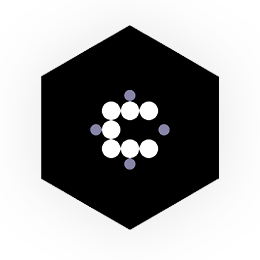Introduction
The Core Alignment Model (CAM) and Third-Order Cybernetics represent advanced frameworks for understanding and optimizing decision-making processes. CAM, with its emphasis on integrating cognitive processes and elemental qualities, aligns seamlessly with the principles of Third-Order Cybernetics, which problematizes the observer's subjectivity and emphasizes self-reflexivity within systems.
From the observer's perspective, the relevance of CAM for Third-Order Cybernetics lies in its ability to incorporate Conscious Awareness as a critical element, ensuring that decision-making remains coherent, adaptive, and responsive to dynamic environments.
This integration not only enhances the observer's role within the system but also provides practical value by fostering a holistic approach to decision-making that considers multiple domains—physical, emotional, mental, and spiritual.
By embedding adaptive feedback loops and critically examining inherent biases, CAM serves as a practical application of Third-Order Cybernetics, enabling observers to navigate complex systems with greater efficacy and insight.
CAM and Third-Order Cybernetics: Integration and Alignment
CAM (Core Alignment Model):
- CAM is a dynamic framework designed to optimize decision-making by integrating cognitive processes with elemental qualities. It emphasizes cyclical and adaptive reasoning, which is continuously monitored and adjusted through Conscious Awareness.
Third-Order Cybernetics:
- Third-Order Cybernetics extends beyond the feedback loops of First and Second-Order Cybernetics by problematizing the observer's subjectivity, leading to a deeper self-awareness and the reflexivity of systems. It focuses on the continuous interaction between the observer and the system, where the observer is both part of and influenced by the system they observe.
Relationship Between CAM and Third-Order Cybernetics
-
Conscious Awareness as a Third-Order Element:
- In CAM, Conscious Awareness acts as an overarching element that ensures the alignment, coherence, and adaptability of the system. This role parallels the function of the observer in Third-Order Cybernetics, where the observer critically reflects on their own role within the system and the feedback loops they influence. Conscious Awareness in CAM similarly ensures that each stage (Mission, Vision, Strategy, Tactics) is aligned with the overall goals and is adaptable based on continuous feedback.
-
Self-Reflexivity in CAM:
- Third-Order Cybernetics emphasizes the necessity of self-reflexivity, where the system (and its observer) continuously evaluates its assumptions and processes. In CAM, this self-reflexivity is embedded in the Conscious Awareness stage, where feedback from all elements is integrated, ensuring that the system remains coherent and responsive to changes. This aligns with the idea in Third-Order Cybernetics that the system is constantly re-evaluating its processes to prevent collapse back into simpler, less adaptive orders of operation.
-
Adaptive Feedback Loops:
- Both CAM and Third-Order Cybernetics emphasize the importance of adaptive feedback loops. In CAM, each element (Mission, Vision, Strategy, Tactics) is not only informed by its own forward-moving processes but also by feedback from subsequent stages. This creates a dynamic interplay where decisions are continually refined. Third-Order Cybernetics extends this by ensuring that these feedback loops are critically examined for inherent biases and assumptions, which CAM accomplishes through its Conscious Awareness element.
-
Problematic of Subjectivity:
- Third-Order Cybernetics problematizes the observer’s subjectivity and the assumptions of “objective” observation. CAM, with its element of Conscious Awareness, similarly challenges and manages the potential biases that could arise in the reasoning process. By ensuring that feedback from each stage is critically assessed, CAM addresses the subjective nature of decision-making and aligns it with a coherent, well-informed perspective.
-
Integration of Multiple Domains:
- Third-Order Cybernetics acknowledges the complexity of systems operating across multiple domains (e.g., experiential and explanatory). CAM similarly integrates multiple cognitive and elemental domains, ensuring that each decision-making process considers the physical, emotional, mental, and spiritual dimensions (Sensation, Feeling, Thinking, Intuition). The Conscious Awareness element ensures that these domains are not isolated but interact holistically.
Practical Steps for Applying CAM in Third-Order Cybernetics:
-
Define the Mission (Observation):
- Action: Establish the core purpose and values guiding the decision-making process.
- Third-Order Cybernetics: Reflect on the observer’s role and biases in defining the mission.
-
Articulate the Vision (Orientation):
- Action: Set clear objectives and desired outcomes.
- Third-Order Cybernetics: Continuously reassess objectives based on critical feedback and reflexivity.
-
Develop Strategies (Decision):
- Action: Formulate actionable strategies to achieve the vision.
- Third-Order Cybernetics: Ensure strategies are adaptable and critically examined for biases.
-
Implement Tactics (Action):
- Action: Execute strategies through specific, practical steps.
- Third-Order Cybernetics: Monitor and adjust actions based on real-time feedback and reflexive evaluation.
-
Maintain Conscious Awareness:
- Action: Continuously integrate feedback and ensure alignment across all stages.
- Third-Order Cybernetics: Use reflexivity to maintain coherence and adaptability in the decision-making process.
Conclusion
By integrating the Core Alignment Model (CAM) with the principles of Third-Order Cybernetics, decision-making processes can be significantly enhanced. CAM's emphasis on Conscious Awareness as an overarching element ensures continuous alignment, coherence, and adaptability across all stages—Mission, Vision, Strategy, and Tactics.
This mirrors the reflexivity and critical examination of feedback loops central to Third-Order Cybernetics. The integration of self-reflexivity, adaptive feedback, and the management of subjectivity within CAM aligns it with the deeper self-awareness and system reflexivity emphasized in Third-Order Cybernetics.
This holistic approach, which considers multiple cognitive and elemental domains, ensures that decision-making processes are not only well-informed and coherent but also responsive to the complexities of dynamic environments. Thus, CAM serves as a practical application of Third-Order Cybernetics, enabling observers to navigate and influence complex systems with greater efficacy and insight.




